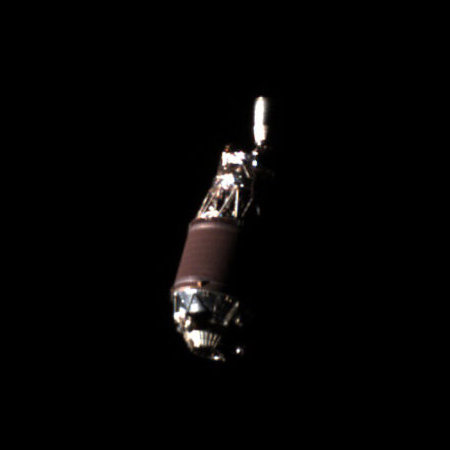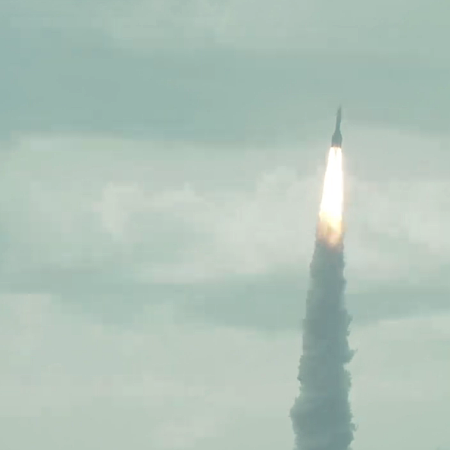A ridge that runs right over a Martian mesa
Cool image time! The picture to the right, cropped, reduced, and sharpened to post here, was taken on April 5, 2024 by the high resolution camera on Mars Reconnaissance Orbiter (MRO). I have cropped it to focus on the geological feature that likely attracted the interest of the scientists who requested this photo, the mesa that has a ridgeline running over it as if the mesa was not even there.
The mesa is about 80 feet high on its west side, but on its east the ground continues to drop away more than 500 feet as you move 2.5 miles to the east. Based on how the MRO science team interprets the colors [pdf] in the color strip, the orange areas are likely dust while the greenish surface suggests coarser sand and boulders. This conclusion is reinforced if you look at the parallel dunes south of the mesa. The dunes are yellow-orange (dust) while the ground between is yellow-green (sand), exactly what you expect with the larger coarser material settling in lower elevations.
The overview map provides the context, which might help explain the ridgeline.
» Read more
Cool image time! The picture to the right, cropped, reduced, and sharpened to post here, was taken on April 5, 2024 by the high resolution camera on Mars Reconnaissance Orbiter (MRO). I have cropped it to focus on the geological feature that likely attracted the interest of the scientists who requested this photo, the mesa that has a ridgeline running over it as if the mesa was not even there.
The mesa is about 80 feet high on its west side, but on its east the ground continues to drop away more than 500 feet as you move 2.5 miles to the east. Based on how the MRO science team interprets the colors [pdf] in the color strip, the orange areas are likely dust while the greenish surface suggests coarser sand and boulders. This conclusion is reinforced if you look at the parallel dunes south of the mesa. The dunes are yellow-orange (dust) while the ground between is yellow-green (sand), exactly what you expect with the larger coarser material settling in lower elevations.
The overview map provides the context, which might help explain the ridgeline.
» Read more

















